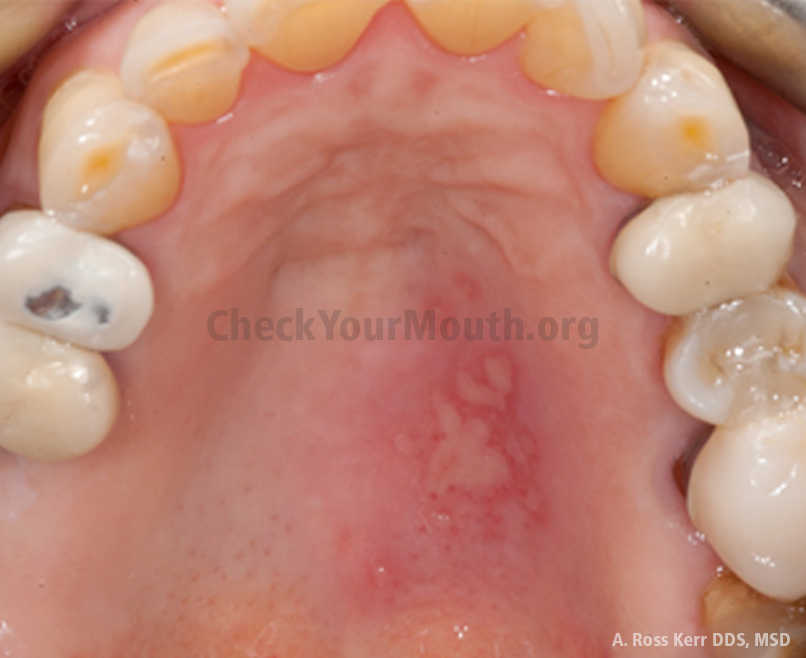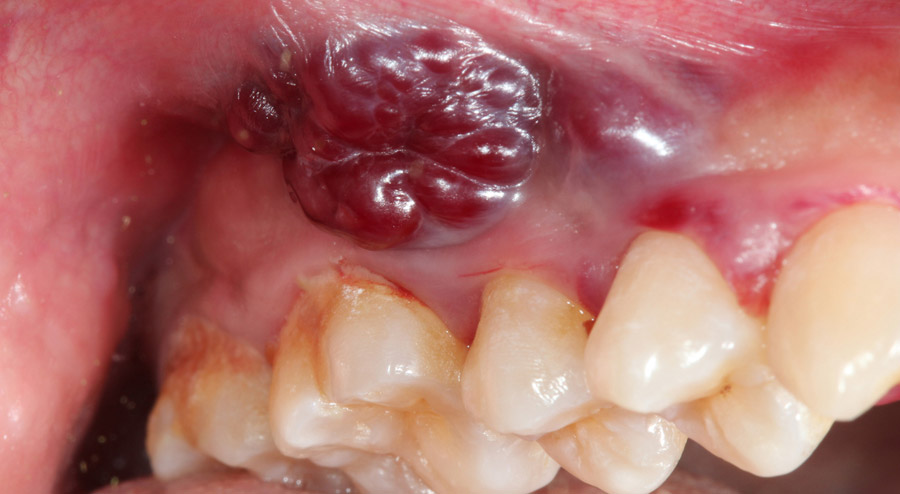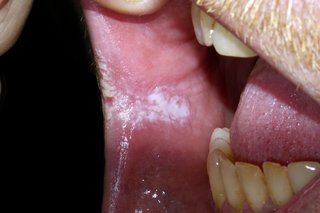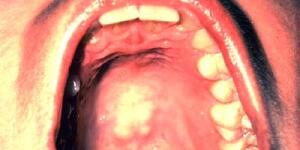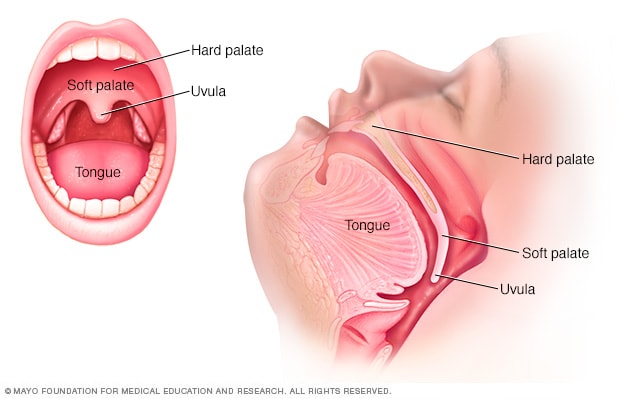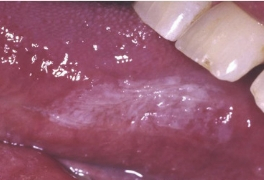Cancerous Normal Roof Of Mouth

Prolonged sore throat or hoarseness.
Cancerous normal roof of mouth. What is cancer of the palate. Your mouth and tongue also signal vitamin deficiencies and these 9 other surprising health secrets. Cancers that develop there tend to spread into the nasal cavity when they become more advanced. There are two main types of canker sores.
Unlike a canker sore a cancerous ulcer won t heal on its own. The hard palate creates a barrier between the mouth and the nasal cavity. Torus palatinus is a harmless painless bony growth located on the roof of the mouth the hard palate. Roof of the mouth floor of the mouth under the tongue cancer that occurs on the inside of the mouth is sometimes called oral cancer or oral cavity cancer.
A torus palatinus is a bony growth that develops on the roof of the mouth. The hard palate creates a barrier between the mouth and the nasal cavity. If red and white patches last more than two weeks. Other signs of oral cancer to watch out for include.
White red or mottled patches. Stiffness pain and swelling in the jaw. Signs of oral cancer. Biopsying these cells is a great way of finding out whether they are cancerous or not.
Erythroplakia are patches or bright red coloration that form in the mouth and are considered to be cancerous in nature. The palate is commonly called the roof of the mouth. You may notice a growing lump or swelling in your upper lip the roof of your mouth inside your cheek or in another spot in your mouth. Hard palate cancer is a type of head and neck cancer that begins when cells that make up the bony part of the roof of the mouth grow out of control and form lesions or tumors.
A mixture of red and white patches in your mouth called erythroleukoplakia is an abnormal cell growth that s more likely to become cancerous. Mouth cancer is one of several types of cancers grouped in a category called head and neck cancers. Since almost 75 to 90 of erythroplakia cases lead to mouth cancers it is essential that these vividly colored patches are not ignored. Numbness anywhere in the mouth.
Sometimes oral cancers develop in the small salivary glands that exist in the lining of your mouth and throat. Mouth sores that bleed. Minor or simple sores and major or complex sores. A torus palatinus is not cancerous.
Keep in mind that not all salivary gland tumors are cancerous. Thickened tissues or lumps. It is divided into two parts.
